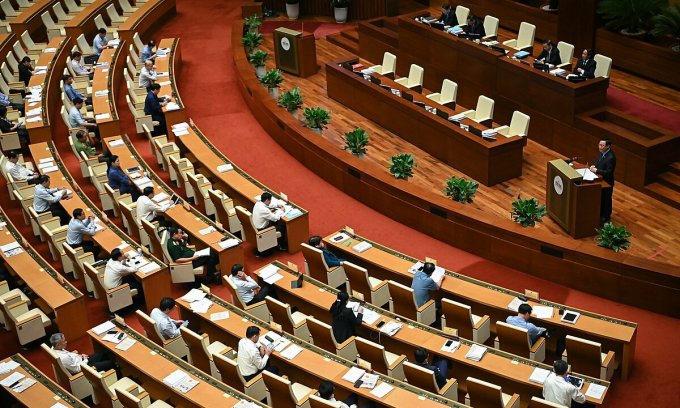Can adjacent land be built under Vietnam law?

Nowadays, the number of people from rural areas moving to cities is increasing significantly. As a result, the demand for land also increases. So about the matter “Can adjacent land be built under Vietnam law?” Let’s find out with LSX in the article below.
Legal grounds
- Land Law 2013
- Circular 24/2014/TT-BTNMT
What is adjacent land?
Adjacent land is adjacent land areas, which are connected to each other with the identified land area. Adjacent land is understood as the conversion of the purpose of using garden land, adjacent ponds and agricultural land interspersed in residential areas (not belonging to public land) converted for residential purposes into residential land, applicable only to garden land. , ponds adjacent to residential land (in the same plot) and agricultural land interspersed in residential areas.
Residential land adjacent to garden pond land is the land area located in the same parcel of housing in a residential area, which is determined as agricultural land when the certificate is issued by a competent State agency.
Agricultural land interspersed in residential areas, is an area of land specifically identified as agricultural land. When they are granted a certificate by a competent State agency, they are located within a residential area whose boundaries have been determined according to the provisions of the Law.
The boundary of the residential area is determined according to the planning approved by the competent State agency. For residential areas without approved planning, the competent authority will determine according to the boundary of the residential land plot with lawful houses.
The legality of the adjacent land is similar to the project ground. This type of land has a clear planning according to each zone, each lot and has a permit from the competent authority and has a red book issued to the owner of that type of land there.
Features of adjacent land
Salient features of adjacent land:
– Adjacent land does not apply to agricultural land managed by the People’s Committees of communes, wards, townships or cooperatives and agricultural land used for public purposes.
– Land for gardens and ponds of households and individuals adjacent to residential land that is determined to be residential land must be in the same land plot where houses are currently located. The remaining area of garden and pond land, after being identified as residential land, shall be classified as agricultural land.
– Agricultural land interspersed in residential areas is the land area certified by a competent State agency and specifically identified as agricultural land.
Adjacent land in the investor’s planned projects has the following characteristics:
• The investor will implement the project and divide the lot according to regulations.
• Usually for the construction of office buildings, residential areas, ecological zones…
• Infrastructure is usually synchronously planned, with utilities such as roads, trees, lighting, etc.
Limited use right to adjacent land
Pursuant to Article 171, the Land Law provides as follows:
“Article 171. Limited use right for adjacent land parcels
1. The limited use right to the adjacent land parcel includes the right to the right of way; water supply and drainage; watering and draining water in cultivation; gas supply; electricity transmission lines, telecommunications and other necessary needs reasonably on the adjacent parcel of land.
2. The establishment of limited use rights to the adjacent land parcel shall comply with the provisions of the civil law and registration must be carried out according to the provisions of Article 95 of this Law.
Thus, the limited use right to the adjacent land parcel includes:
+ Right of way.
+ Water supply and drainage rights.
+ The right to water and drain water in cultivation.
+ The right to connect power transmission lines and communication.
Can adjacent land be built under Vietnam law?
According to Article 170 of the 2013 Land Law, land users have the following general cases:
• Use the land for the right purposes, within the boundaries of the land plot, in accordance with the regulations on using the depth in the ground and the height in the air, protecting the public works in the ground, and complying with other provisions of the law. relevant law.
• Making land registration declaration; to complete all procedures when converting, transferring, leasing, subleasing, inheriting or donating land use rights; mortgage or contribute capital with land use rights as prescribed by law.
• Fulfill financial obligations as prescribed by law.
• Implement measures to protect the land.
• Comply with regulations on environmental protection, without harming the legitimate interests of relevant land users.
• Follow the law on finding objects in the ground.
• Re-allocate land when the State has a decision on land recovery, when the land use term expires but the land use term is not extended by a competent state agency.
Thus, it is not possible to build a house on adjacent land. However, if you want to build a house on adjacent land, you can combine two land plots into one.
Procedures for land parcel consolidation
Dossier of application for land parcel consolidation
Pursuant to Clause 11 Article 9 of Circular 24/2014/TT-BTNMT; Persons wishing to combine plots need to prepare 01 set of dossiers, including:
• An application for land consolidation, made according to Form No. 11/DK;
• The original of the issued Certificate (Original Red Book).
Order of land parcel consolidation
Submit
Submit the prepared documents at the District Land Registry Office Branch; where the Single Window has been organized, it shall be submitted to the Single Window Department or the Department of Natural Resources and Environment. Family; individual; The population community shall submit dossiers to the People’s Committee of the commune (commune, ward, township) if there is a need.
In case of receiving incomplete or invalid dossiers, within a maximum of 03 days, the dossier-receiving and processing agencies must notify and guide the dossier-submitters to supplement and complete the dossiers in accordance with regulations. .
Receiving records
The dossier-receiving agency shall record all information in the dossier-receiving book; hand over the Receipt slip to the applicant.
Handle
The branch of the Land Registration Office shall perform the following tasks:
• Cadastral survey to separate land parcels;
• Make a dossier and submit it to the district-level People’s Committee for granting a certificate to the land user for the newly merged land plot;
• Edit and update changes in cadastral records and land databases.
Return results
The branch of the land registration office shall hand over the certificate to the grantee or send it to the commune-level People’s Committee for handing over the case of filing at the commune level within 03 days from the date of the settlement result.
Services of LSX
Prestigious professional services: Firstly, the team of consultants and consultants for many years in the field of civil status, and customer support.
On-time: Certainly, with the motto “Get your lawyer right at your fingertips”, we ensure the service always performs on time. The rights and interests of customers always come first.
Cost: Besides, LSX’s service costs are highly competitive; depending on the nature of the particular case. So, we want our guests to have the best possible service experience. Therefore, costs which guaranteed to be the most suitable and economical for customers.
Confidentiality of client information: Finally, all brand information of client LSX will be 100% confidential.
Please contact us immediately if you have any questions about “Can adjacent land be built under Vietnam law?”
Contact LSX
Finally, hope this article is useful for you to answer the question about “Can adjacent land be built under Vietnam law?” If you need any further information, please contact LSX Law firm: at +84846175333 or Email: [email protected]
Please see more
- Cases of granting land use right certificates in Vietnam
- Dispute about the origin of land in Vietnam
- Land valuation income method in Vietnam
Frequently asked questions
Pursuant to Point d, Clause 1, Article 112 of the Land Law, as follows:
“Article 112. Principles and methods of land valuation
Land valuation must ensure the following principles:
…
d) At the same time, adjacent land plots with the same use purpose, profitability and income from similar land use will have the same price.
According to Article 171 of the 2013 Land Law, the limited use right to the adjacent land parcel is prescribed as follows:
Limited use rights to the adjacent parcel of land, including the right of access; water supply and drainage; watering and draining water in cultivation; gas supply; electricity transmission lines, telecommunications and other necessary needs reasonably on the adjacent parcel of land.
The establishment of limited use rights to the adjacent land parcel shall comply with the provisions of the civil law and registration must be carried out according to the provisions of Article 95 of this Law.
Adjacent land can be converted to residential land by applying for a certificate of land use conversion. Households and individuals applying for land use purpose change must be a person who strictly abides by the local land law, certified by the People’s Committee of the commune, ward or township where the land is located and has a written commitment to the following main contents:
Comply with regulations of competent state agencies for the area within the safety protection corridor of public works, dikes, rivers, canals, ditches, historical-cultural relics, famous landmarks scenic spots, security and defense works, planning for flood drainage according to regulations.
To hand over to the People’s Committees of communes, wards and townships the area within the boundary of the planning road and the common-use path of the area when the competent state agency recovers the land according to regulations. Fully pay financial obligations on land and other financial obligations on time as prescribed when being allowed to change land use purpose.
Conclusion: So the above is Can adjacent land be built under Vietnam law?. Hopefully with this article can help you in life, please always follow and read our good articles on the website: lsxlawfirm.com




